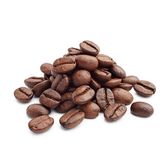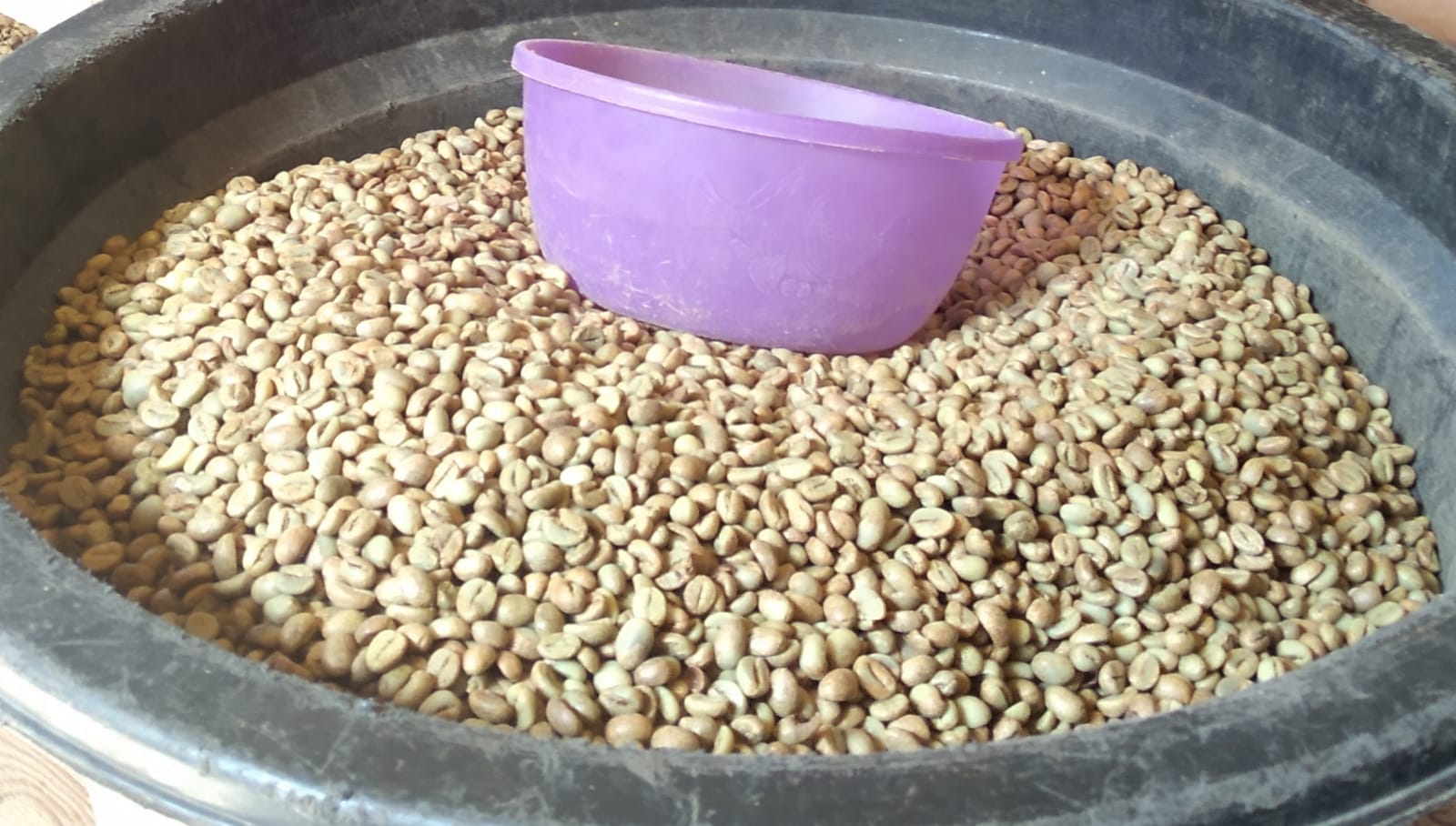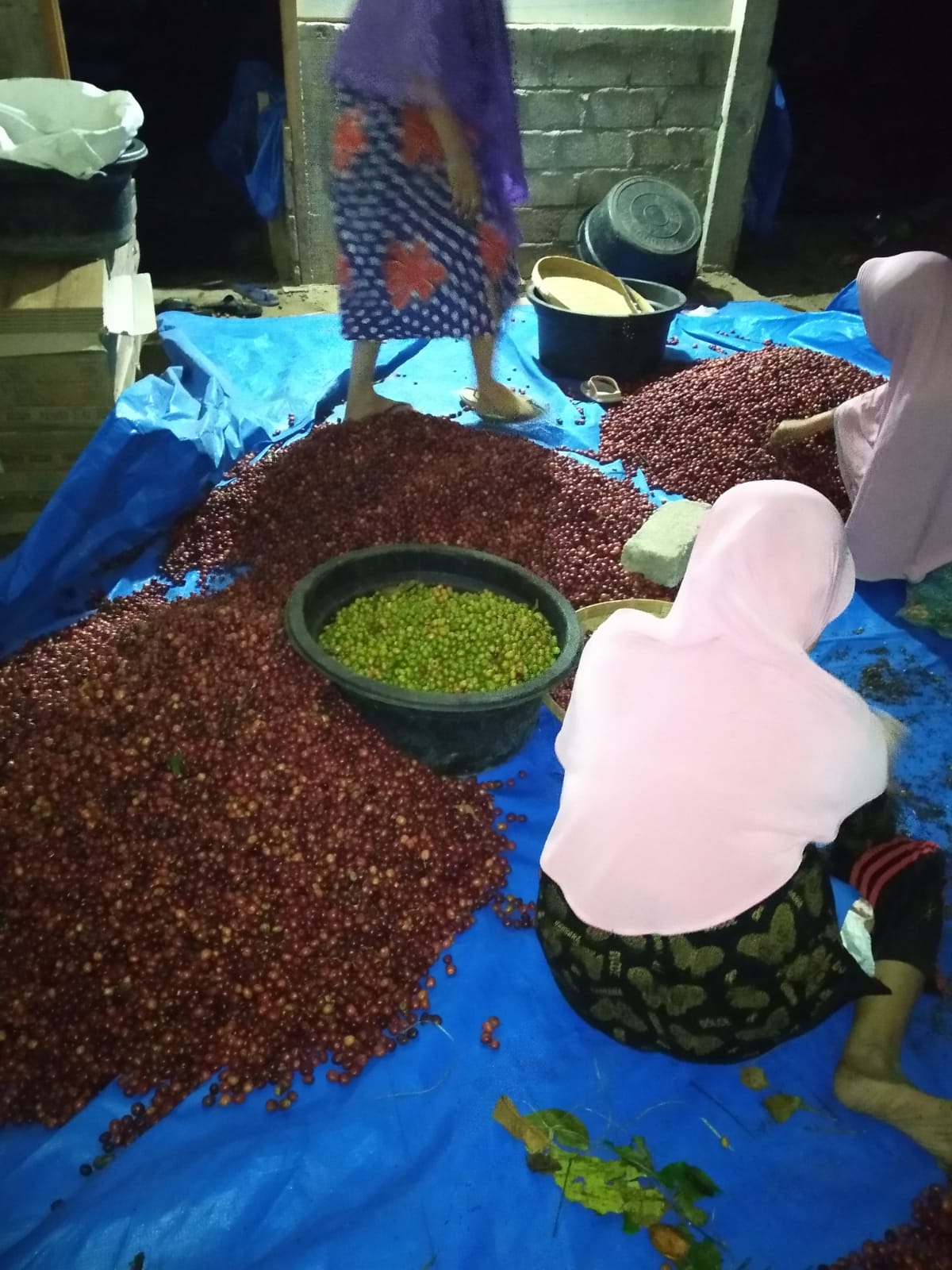
Robusta Green Bean Coffee Grade 1

인도네시아
|
Submitted By PT. Agro Eksotis Lestari
|
Last updated on 2022년 4월 30일
Latest Offers
Unit Price
4.30 /
Offer Quantity
100
Origin
인도네시아 / West Nusa Tenggara
Payment Terms
Telegraphic Transfer
Letter of Credit
Remark
Packaging
INCOTERMS
fob / Tanjung Perak, Surabaya / 인도네시아
Specification
Wet Process. Honey Process. Double Washed. Semi Washed. Semi Washed - Black Honey. Semi Washed - Red Honey. Semi Washed - Yellow Honey. Unwashed. Washed. Roasted. Dark Roast. Medium Roast. Light Roast. Raw
S18. S16. Large. Medium. Small
Medium Body. Medium Acidity. Caramel. Fruity
12%
Multi Wrapped. Jute Bag (50kg). Jute Bag (25kg)
Powder. Whole Beans
Brown. Dark Brown. Green
Grade 1 (SCAA: Specialty Grade)
Single Origin
Robusta
Non-organic. Organic
Description
Agro Exotic is a company under the name of
PT. Agro Eksotis Lestari. We are a company that provides various kinds of agricultural products based in Mataram, Lombok Island, West Nusa Tenggara, Indonesia.
Contact Us
PT. Agro Eksotis Lestari
Jl. Pesona Wisata, Pagutan Timur, Mataram City, Lombok Island, West Nusa Tenggara, Indonesia (83127)
+62895394485354
+6281999777801
info@agroexotic.com
PT. Agro Eksotis Lestari. We are a company that provides various kinds of agricultural products based in Mataram, Lombok Island, West Nusa Tenggara, Indonesia.
Contact Us
PT. Agro Eksotis Lestari
Jl. Pesona Wisata, Pagutan Timur, Mataram City, Lombok Island, West Nusa Tenggara, Indonesia (83127)
+62895394485354
+6281999777801
info@agroexotic.com
At a glance
-
Description
Robusta Green Bean Grade 1
As for robusta coffee, it is descended from several types of coffee species. Regarding the quality of the coffee cherries, in fact it is lower than Arabica and Liberica coffees. This type of coffee controls about 30% of the world market.
Regarding the origin of the coffee, it is widely available in Colombia, Indonesia, and also the Philippines. Then what are the characteristics of the coffee? People will usually find a taste that is more like chocolate. The resulting smell is also sweet. The texture of this coffee tends to be rough and has a variety of colors. Maybe you also need to know the characteristics of the Robusta tree. Robusta trees are more susceptible to insect attack. It even grows on low land, which is about 700 m above sea level. The number of coffee beans produced is also higher. For the flowering process, it takes up to 10 months which will later become fruit. This type of coffee bears fruit in warmer air temperatures.
As for robusta coffee, it is descended from several types of coffee species. Regarding the quality of the coffee cherries, in fact it is lower than Arabica and Liberica coffees. This type of coffee controls about 30% of the world market.
Regarding the origin of the coffee, it is widely available in Colombia, Indonesia, and also the Philippines. Then what are the characteristics of the coffee? People will usually find a taste that is more like chocolate. The resulting smell is also sweet. The texture of this coffee tends to be rough and has a variety of colors. Maybe you also need to know the characteristics of the Robusta tree. Robusta trees are more susceptible to insect attack. It even grows on low land, which is about 700 m above sea level. The number of coffee beans produced is also higher. For the flowering process, it takes up to 10 months which will later become fruit. This type of coffee bears fruit in warmer air temperatures.
At a glance
-
Photos & Videos


Description
Do you know? According to one source, the quality of coffee is determined by 60% when in the garden, 30% when roasted and 10% when brewed. Thus, the process of planting to post-harvest on coffee beans is the most important stage and has the greatest influence.
There are 4 post-harvest coffee processing methods, including:
1. Natural Process
This familiar process is the post-harvest process of coffee beans which is actually carried out without the use of machines and water (processed naturally). After the coffee cherries that have passed the sorting are picked, the fruit is immediately dried on a drying board along with the skin layer in the sun. The cherries are then inverted periodically to dry evenly. With this process, the cherries will naturally ferment and the outer skin will peel off by itself. This process is widely applied by farmers in Indonesia because of its simple method. However, although it is fairly simple, this process is also quite risk-prone because it relies heavily on the weather. If there is no rain, this drying process can take up to 4-6 weeks. The taste produced from naturally processed coffee beans is usually very fruity or has a strong fruity taste such as blueberry and strawberry, with full body and low acidity.
2. Honey Process
Many think that the honey process is a method of processing coffee beans using honey. Not at all though. So this is the explanation. The coffee cherries that have passed the sorting are then peeled but still retains a layer of mucilage and then dried in the sun. The mucus layer is the main key for the honey process because it stores sugar and acidity content so that the resulting taste is high sweet with a balanced acidity. The sticky mucus layer resembling honey makes this process called the honey process. The difference in the amount of mucus that is still attached makes the coffee beans that go through this process and have been dried into three colors, namely Red (50% mucus layer), Yellow (25% mucus layer), and Black Honey (100% mucus layer).
3. Full-Washed Process
The first coffee washing process is Full-washed. This process begins by placing the coffee cherries in a tub filled with water to select ripe and unripe fruit. Ripe coffee cherries will sink to the bottom of the tub, while unripe ones will float. This soaking process can take up to 12 hours with the change of the soaking water in the 6th hour. Then, the selected coffee cherries will be dried in the sun for approximately 3-4 weeks to dry. The character of the taste produced by this process is a light and mild coffee.
4. Semi-Washed Process
As the name suggests, the semi-washed process or the 'wet-hulled process' which in Indonesian is commonly referred to as the 'milled wet' is a processing method that combines a natural process with a washed process (hybrid method). In the initial process, the ripe cherries are peeled off using a machine and then the contents are dried in the sun. After the drying process is complete, the coffee beans that are still in a slimy state are then stored for approximately 24 hours. Then, the mucus that is still attached is washed clean and dried again. Coffee beans processed with this method have a fairly strong body and are very suitable for processing into espresso and have a more intense sweet taste with lower acidity
There are 4 post-harvest coffee processing methods, including:
1. Natural Process
This familiar process is the post-harvest process of coffee beans which is actually carried out without the use of machines and water (processed naturally). After the coffee cherries that have passed the sorting are picked, the fruit is immediately dried on a drying board along with the skin layer in the sun. The cherries are then inverted periodically to dry evenly. With this process, the cherries will naturally ferment and the outer skin will peel off by itself. This process is widely applied by farmers in Indonesia because of its simple method. However, although it is fairly simple, this process is also quite risk-prone because it relies heavily on the weather. If there is no rain, this drying process can take up to 4-6 weeks. The taste produced from naturally processed coffee beans is usually very fruity or has a strong fruity taste such as blueberry and strawberry, with full body and low acidity.
2. Honey Process
Many think that the honey process is a method of processing coffee beans using honey. Not at all though. So this is the explanation. The coffee cherries that have passed the sorting are then peeled but still retains a layer of mucilage and then dried in the sun. The mucus layer is the main key for the honey process because it stores sugar and acidity content so that the resulting taste is high sweet with a balanced acidity. The sticky mucus layer resembling honey makes this process called the honey process. The difference in the amount of mucus that is still attached makes the coffee beans that go through this process and have been dried into three colors, namely Red (50% mucus layer), Yellow (25% mucus layer), and Black Honey (100% mucus layer).
3. Full-Washed Process
The first coffee washing process is Full-washed. This process begins by placing the coffee cherries in a tub filled with water to select ripe and unripe fruit. Ripe coffee cherries will sink to the bottom of the tub, while unripe ones will float. This soaking process can take up to 12 hours with the change of the soaking water in the 6th hour. Then, the selected coffee cherries will be dried in the sun for approximately 3-4 weeks to dry. The character of the taste produced by this process is a light and mild coffee.
4. Semi-Washed Process
As the name suggests, the semi-washed process or the 'wet-hulled process' which in Indonesian is commonly referred to as the 'milled wet' is a processing method that combines a natural process with a washed process (hybrid method). In the initial process, the ripe cherries are peeled off using a machine and then the contents are dried in the sun. After the drying process is complete, the coffee beans that are still in a slimy state are then stored for approximately 24 hours. Then, the mucus that is still attached is washed clean and dried again. Coffee beans processed with this method have a fairly strong body and are very suitable for processing into espresso and have a more intense sweet taste with lower acidity
At a glance
-
By clicking “Accept Cookies,” I agree to provide cookies for statistical and personalized preference purposes. To learn more about our cookies, please read our Privacy Policy.